- Home
- Identifying birds
- What Bird Is This
What Bird Is This?
Spotted a bird in your garden and not sure what it was? Use this quick ID guide to discover UK birds by colour, size, habitat and sound — perfect for beginners.
Filter by:
Seen at the Feeder?
Here are some of the most common UK garden birds you're likely to spot visiting feeders — especially in autumn and winter:
- 🟨 Blue Tit – bold little acrobat, loves peanuts and fat balls
- 🟨 Great Tit – larger, with a black cap, yellow chest with black stripe
- 🟨 Goldfinch – flocks to nyjer seed, red face and yellow wing flash
- 🟥 Robin – bold and curious, especially in winter, attracted to mealworms
- 🟥 Bullfinch – quiet and stocky with a pink chest, will visit platform feeders
- 🟥 Long-tailed Tit – loves fat balls, often in a flurry of fluffy friends
- 🟫 House Sparrow – noisy flock, loves seed mixes
- 🟫 Dunnock – shy ground feeder, often under the bird table
- 🟫 Chiffchaff – not a regular feeder bird, but seen near gardens in spring
- ⚫ Coal Tit – quick and nervous, dashes in and out
- ⚫ Blackbird – mostly on the ground, loves suet and fruit, will sometimes hop up on a platform feeder
- 🟩 Greenfinch – chunky and bright, enjoys sunflower hearts
🟨 Yellow Birds
Bright and cheerful, yellow birds often catch the eye at feeders or out in open countryside. These colourful visitors include some of the UK's most recognisable species — from bold wing flashes to entire yellow heads!
🔴🟨 European Goldfinch
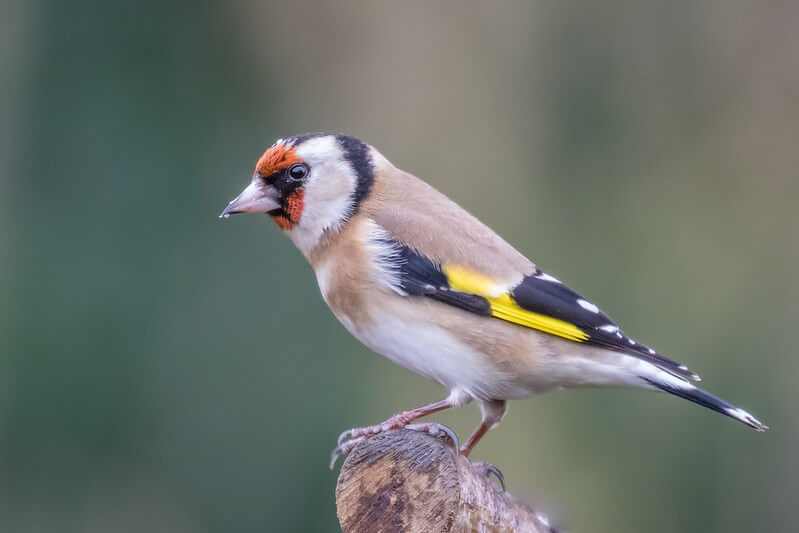
What to Look For:
Bright red face, yellow wing bar, slender beak
Often seen in small flocks, flitting between feeders
Where You Might See It:
Garden feeders, weedy patches, parklands
Sound:
Tinkling twitter
🎧 Hear it »
🟨 Yellowhammer
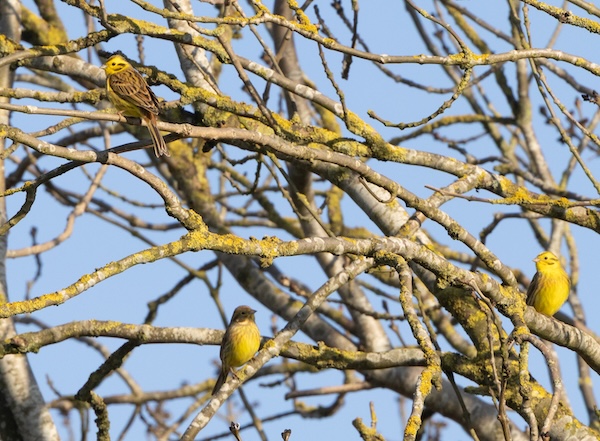
What to Look For:
Yellow head and breast, brown streaky back
Sings from hedges with upright posture
Where You Might See It:
Farmland, hedgerows, countryside edges
Sound:
“A-little-bit-of-bread-and-no-cheese”
🎧 Hear it »
🟨 Great Tit
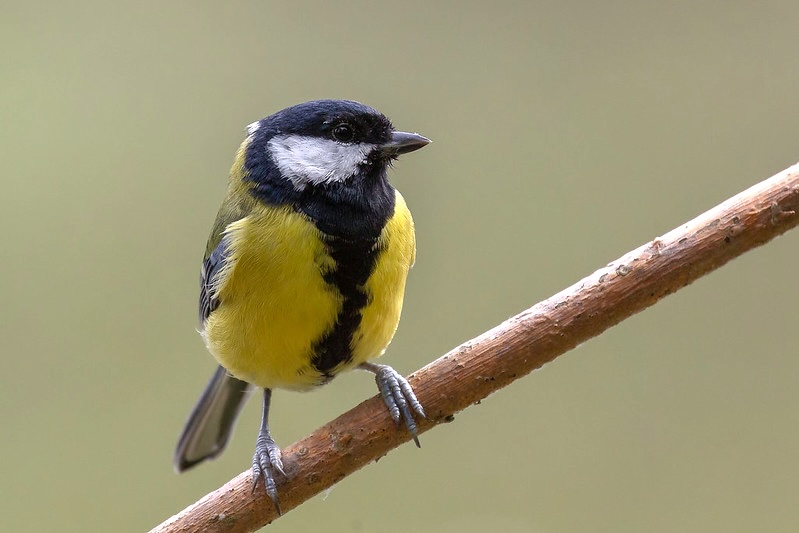
What to Look For:
Yellow belly with bold black stripe down the middle
Glossy black head and white cheeks
Larger than a Blue Tit, with a louder personality!
Where You Might See It:
At feeders, in woodlands, hedgerows and parks
Often the first to grab seed or fat balls
Sound:
Two-note “teacher-teacher” call, loud and repetitive
🎧 Hear it on RSPB »
🟨 Blue Tit
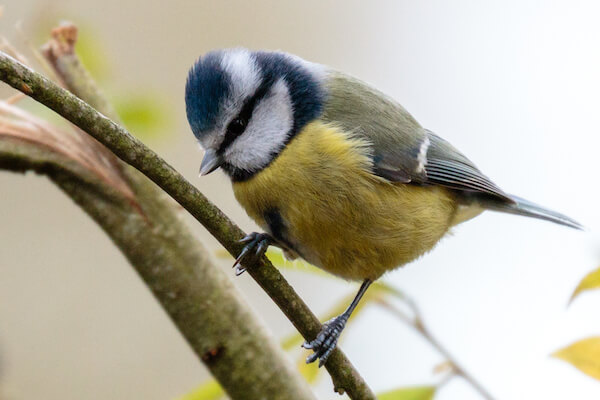
What to Look For:
Bright yellow belly, **blue cap**, wings and tail
White cheeks and a thin black eye stripe
Very acrobatic — often seen hanging upside down!
Where You Might See It:
Common at feeders, especially in winter
Also found in parks, gardens, hedgerows and woodland
Sound:
High-pitched, trilling “tsee-tsee-tsee” and scolding calls
🎧 Hear it on RSPB »
🆚 Greenfinch vs Goldfinch: How to Tell Them Apart
These two garden finches are often seen at feeders — both greenish, both frequent visitors — but once you know the clues, they’re easy to tell apart:
- 🔴🟨 Goldfinch: Smaller and slimmer, red face, bold yellow wing bar, sings a light twittering song
- 🟩🟨 Greenfinch: Chunkier and larger, olive-green body with some yellow in wings, sings a harsh wheeze (“dzwee”)
They may visit feeders at the same time, especially in winter — so watch for size, colour, and sound!
🔴 Red/Pink Birds
Some of the most iconic British birds wear red — from the festive robin to the flash of a bullfinch. Look out for their bold markings in winter and early spring especially.
🔴 European Robin
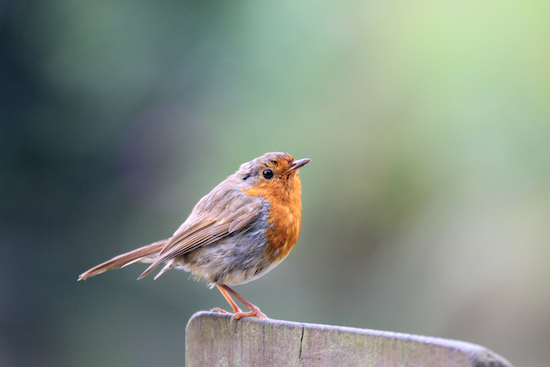
What to Look For:
Red-orange chest and face, round body, thin legs
Where You Might See It:
Garden feeders, woodland edges, perched on spades!
Sound:
Varied warble — sings year-round
🎧 Hear it »
🔴 Chaffinch (Male)
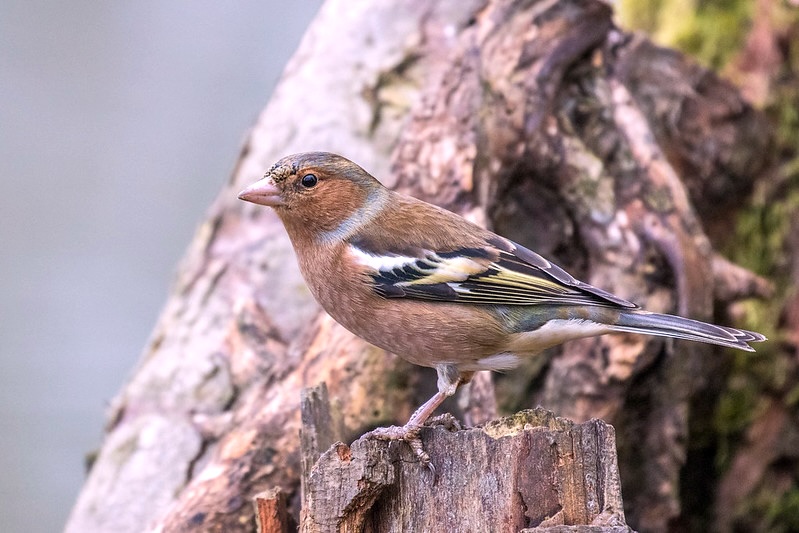
What to Look For:
Pink breast, grey-blue head, white wing bars
Where You Might See It:
Woodland edges, gardens, hopping under feeders
Sound:
Upward trill ending in a flourish
🎧 Hear it »
🔴 Long-tailed Tit
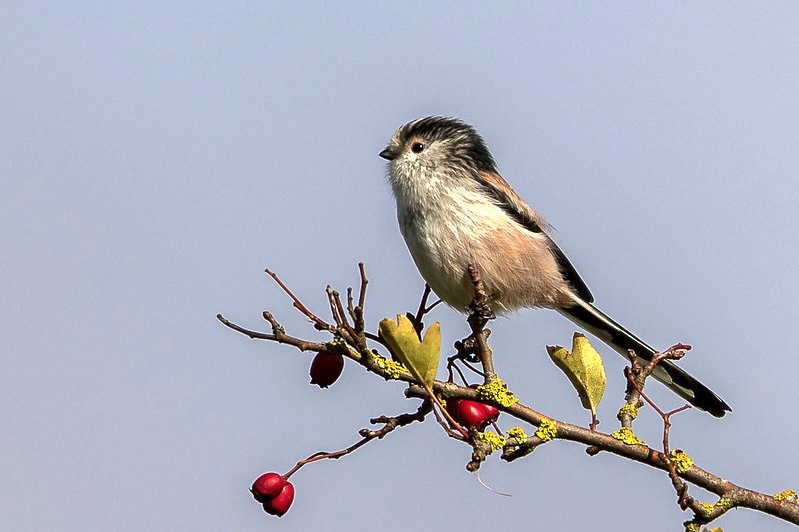
What to Look For:
Tiny, round body with a very long tail
Fluffy white face, dark wings, and soft pink flanks
Usually seen in small, excitable groups
Where You Might See It:
Garden feeders (especially fat balls), hedgerows, and woodland edges
Common in winter mixed flocks with Blue and Great Tits
Sound:
High-pitched “see-see” calls and soft twittering
🎧 Hear it on RSPB »
🔴 Bullfinch (Male)
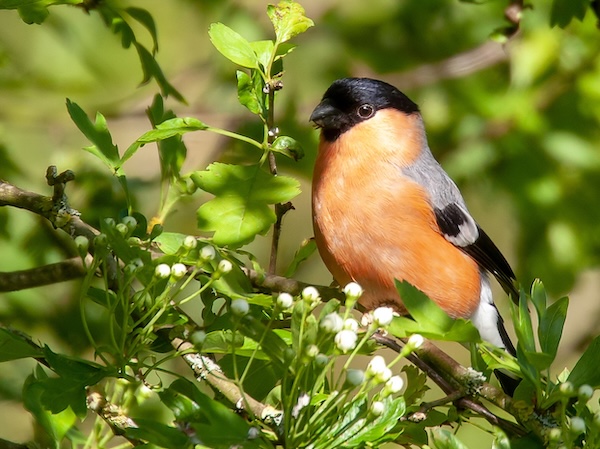
What to Look For:
Bright pink-red chest, black cap, stubby beak
Grey back and white rump visible in flight
Females are more muted brown with the same shape
Where You Might See It:
Woodland edges, orchards, and thick hedgerows
May visit feeders quietly in pairs, especially in winter
Sound:
Soft, short, mournful whistle — “peu”
🎧 Hear it on RSPB »
🔴 Goldfinch Face?
Noticed a red face at the feeder?
It’s likely the Goldfinch — colourful all over, but listed in the Yellow section!
🔴 Red-Capped Visitor?
Could be a Green Woodpecker — that red crown is striking, but it's mostly mossy green.
Find it in the Green Birds section!
🟫 Brown Birds
These subtle-toned birds might not stand out at first, but they’re some of the UK’s most charming and rewarding to spot — especially in gardens and hedgerows.
🟫 Wren
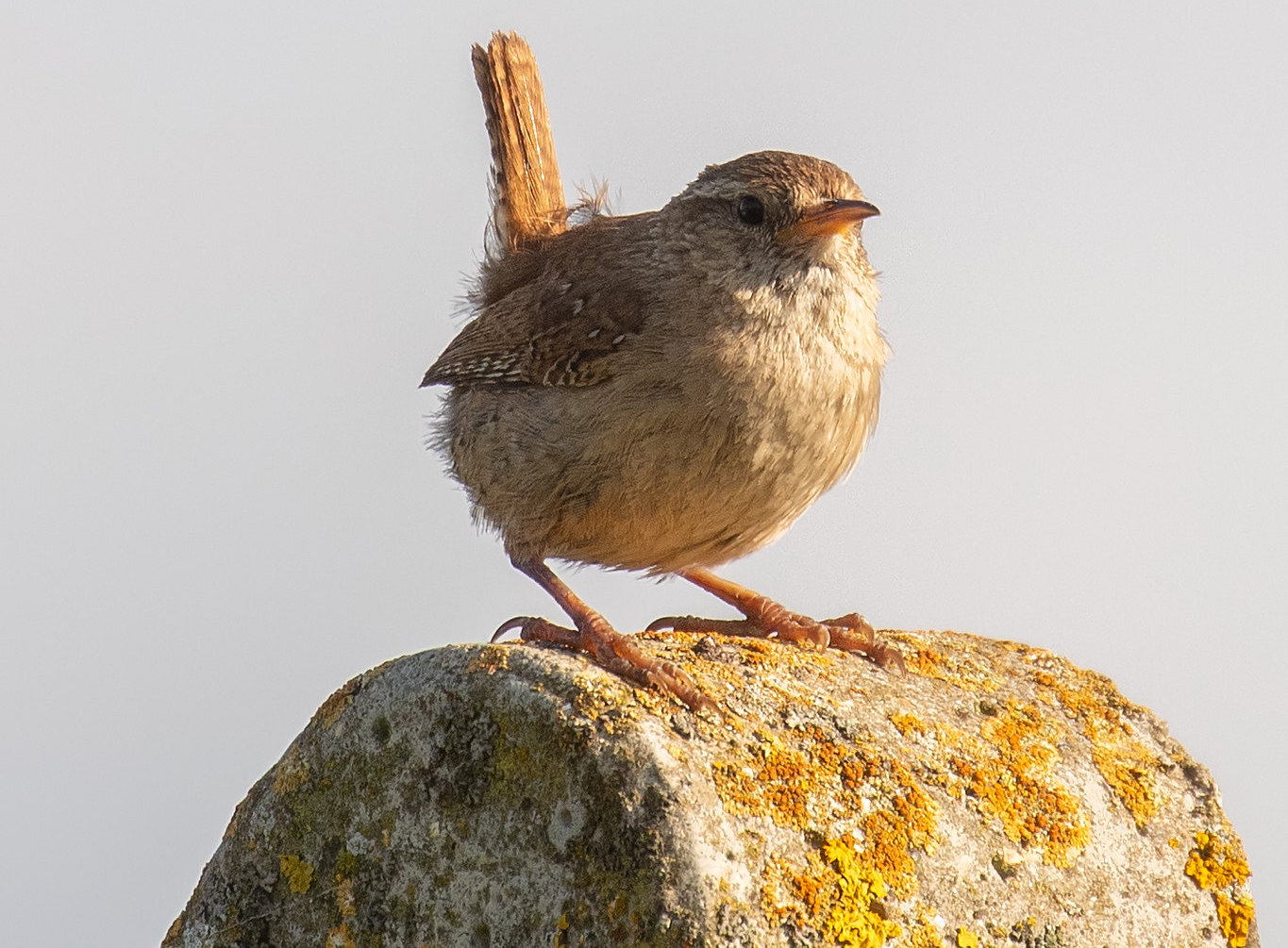
What to Look For:
Tiny, round body, upright tail, loud voice for its size
Where You Might See It:
Near shrubs, brambles, or stone walls
Sound:
🎧 The typical trill of the wren, joined at the end by a Great Tit.
🔝 Back to top🟫 Dunnock (Hedge Sparrow)
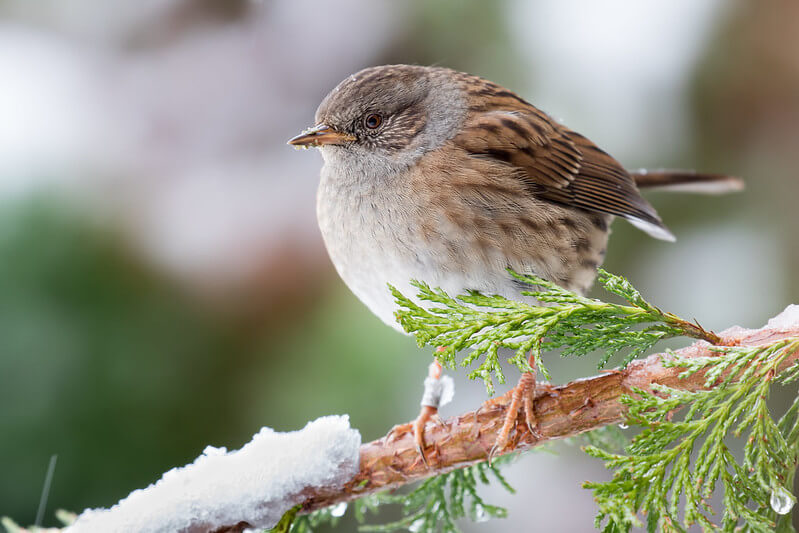
What to Look For:
Slim, brown back, grey chest, quiet manner
Where You Might See It:
Hopping under feeders, low hedges
Sound:
Soft, pleasant warble
🎧 Hear it »
🟫 House Sparrow (Male)
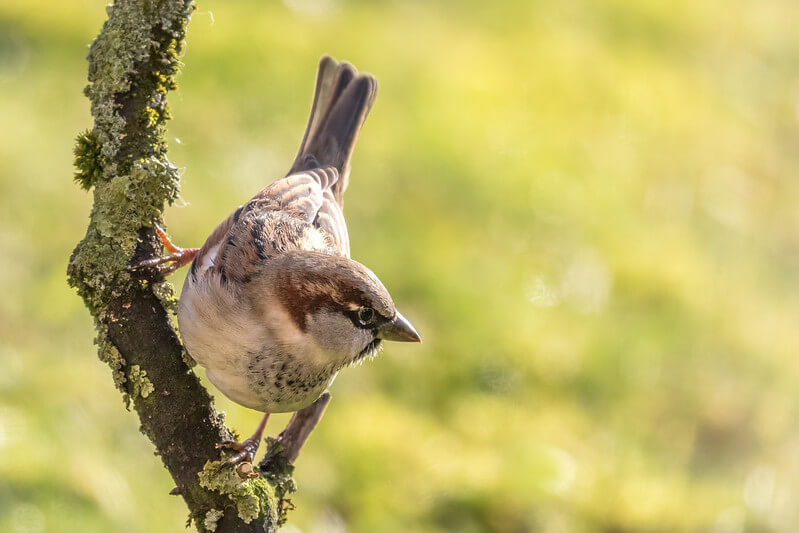
What to Look For:
Chunky, brown back with black streaks
Males have a grey cap and black throat
Females are plainer brown and lack the bib
Where You Might See It:
In noisy flocks near houses, hedges, rooftops
Around feeders or nesting in eaves and crevices
Sound:
Repetitive cheeping and social chirps
🎧 Hear it on RSPB »
🟫 Chiffchaff
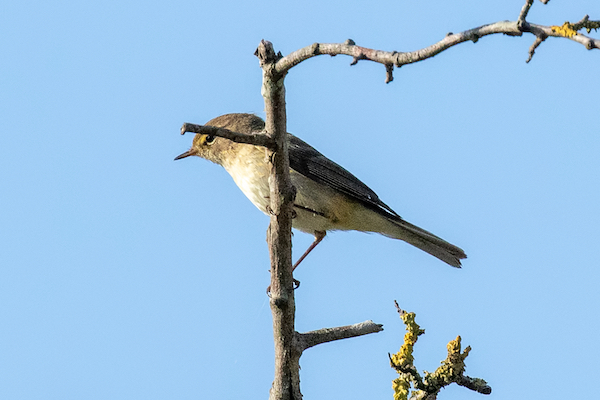
What to Look For:
Small, plain warbler with olive-brown back and pale underparts
Constant tail flicking is a giveaway
Easily confused with the Willow Warbler
Where You Might See It:
In hedgerows, woodland edges, and parks in spring/summer
Often flits through branches searching for insects
Sound:
🎧 Listen to the song of the common chiffchaff — steady, simple, unmistakable.
You’ll also hear my footsteps, a breath or two, and another sound in the distance.
A mammal calling now and then. I know what it was… but do you?
🆚 Chiffchaff vs Willow Warbler
These two warblers are almost identical at first glance — both small, brownish-green birds that arrive in spring. But with a little practice, you can tell them apart by their behaviour, build, and song.
- 🟫 Chiffchaff: Shorter wings, darker legs, constantly flicks its tail
Song is two-note: “chiff-chaff, chiff-chaff” - 🟩 Willow Warbler: Longer wings, paler legs, tail usually still
Song is a sweet, descending series of notes — more melodic
Still unsure? Look at tail movement and listen carefully — sound is the best clue!
⚫ Black & Black-and-White Birds
These birds are bold, beautiful and often striking against the greenery. Whether it’s glossy black plumage or the contrasting patches of black and white, these are some of the UK’s easiest birds to recognise — and hear!
⚫ Coal Tit

What to Look For:
Small size, black cap, white cheeks, and a white neck patch at the back
Buff belly and fine beak
Often nervous and flits quickly in and out of feeders
Where You Might See It:
Visiting feeders in winter
Prefers conifers, but increasingly common in gardens
Sound:
Thin “see-see-see” call and short buzzing trills
🎧 Hear it on RSPB »
⚫ Pied Wagtail
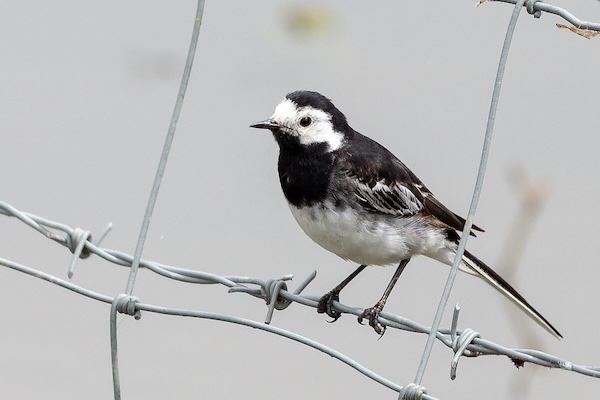
What to Look For:
Small black-and-white bird with long wagging tail
Constant tail-bobbing when walking
Flight is bouncy and often low to the ground
Where You Might See It:
Urban pavements, parks, car parks, riversides
Feeds on insects and always on the move
Sound:
Sharp “chissick!” call, often heard in flight
🎧 Hear it on RSPB »
⚫ Blackbird (Male)
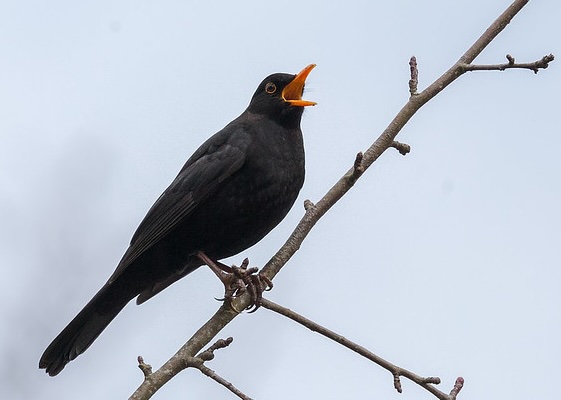
What to Look For:
Males are jet black with a bright yellow bill and eye ring
Females are brown with streaky throats
Often seen hopping on lawns and flicking leaves
Where You Might See It:
Gardens, parks, hedgerows and woodland paths
One of the first birds to sing at dawn
Sound:
Melodic, fluting song — rich and varied
🎧 Hear it on RSPB »
⚫ Jackdaw
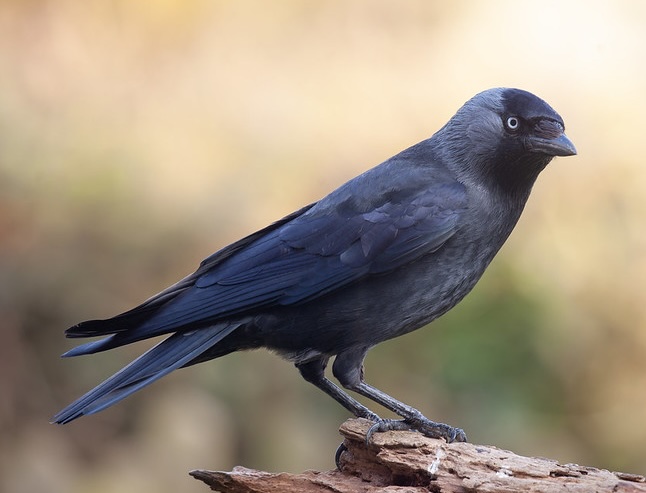
What to Look For:
Black body with a silvery-grey nape
Smaller than a crow, with a steep forehead and pale blue eyes
Inquisitive and highly social
Where You Might See It:
Town centres, chimneys, woodlands, churchyards
Often nests in chimneys and towers
Sound:
“Jack-jack!” call — short and metallic
🎧 Hear it on RSPB »
🆚 Coal Tit vs Great Tit: Spot the Difference
Both are black-capped garden visitors, but once you notice the details, they’re easy to tell apart:
- ⚫ Coal Tit: Tiny and quick, with a white patch on the back of its neck, thinner bill, and no strong chest colour
- 🟨 Great Tit: Larger and bolder, with a yellow chest and thick black stripe down the centre, and glossy black head
Coal Tits tend to dart in and out quickly at feeders. Great Tits are more confident and often dominate the peanut station!
🟩 Green Birds
Though not always bright lime green, these birds have olive or mossy green tones that help them blend into foliage. Look closely — their colours and behaviours make them stand out once you know what to watch for.
🟩 Green Woodpecker
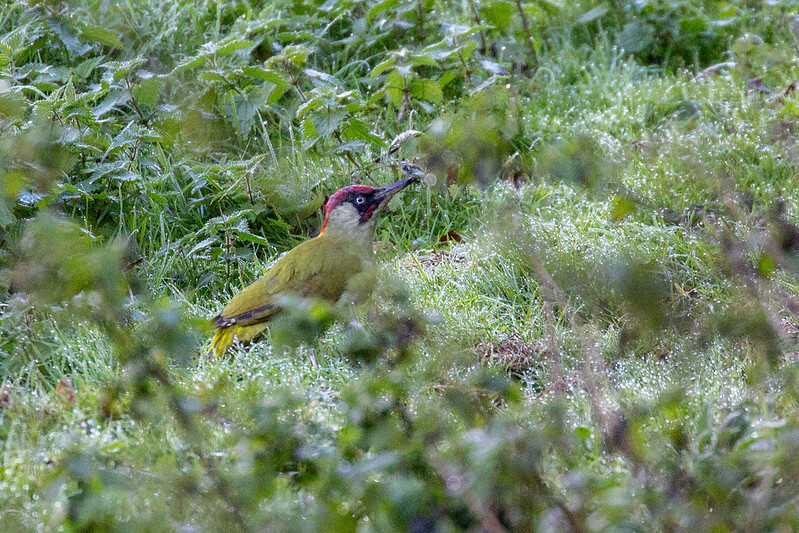
What to Look For:
Mossy green back, bright red crown, yellow rump
Black mask-like eye marking
Often seen on lawns searching for ants
Where You Might See It:
Lawns, meadows, golf courses, parkland
Less likely at feeders, but bold in open spaces
Sound:
Loud, laughing “yaffle” call — often while flying
🎧 Hear it on RSPB »
🟩 Greenfinch

What to Look For:
Olive-green plumage with yellow wing bars
Chunky body and thick finch beak
Females are duller but similar in shape
Where You Might See It:
At seed feeders, especially sunflower hearts
Also in hedgerows, scrub, and gardens
Sound:
Harsh “dzwee” wheeze and trills
🎧 Hear it on RSPB »
🟩 Willow Warbler
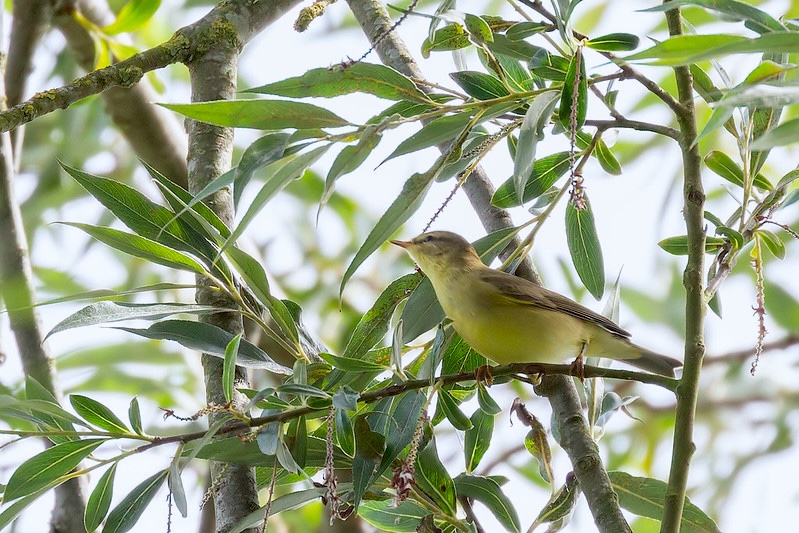
What to Look For:
Pale yellow-white underside, olive-green back
Thin pointed bill, long primary feathers
Very similar to Chiffchaff — but with pink legs and longer wings
Where You Might See It:
Woodland edges, scrubby fields, spring hedgerows
Arrives in spring and departs by early autumn
Sound:
Sweet, descending series of notes — more melodic than a Chiffchaff
🎧 Hear it on RSPB »
Ready to Keep Exploring?
Whether you've just met your first Blue Tit or finally put a name to that bouncing blackbird on the lawn, I hope this guide helped bring the birds around you into sharper, more joyful focus.
Every walk, window view, or feeder visit is a chance to see something new — even in the most familiar places. Birdwatching is about noticing small things and finding wonder in the everyday.
Want to go deeper? You can explore my full bird profiles, photography tips, or subscribe to Wild Lens for seasonal stories and sightings.
Birds know no boundaries — and neither should your curiosity.

About the Author
Carol is a UK-based wildlife photographer and nature writer with a passion for peaceful walks, patient observation, and capturing life’s quiet wonders.
Through her lens and words, she shares the stories of the natural world — from bluebells and butterflies to birds like the great crested grebe.
Get closer to UK nature
Subscribe to Wild Lens!
Want to discover more hidden walks and wildlife moments?
I’d love to share my latest nature finds, photo tips, and peaceful walk recommendations with you.
💌 Join my newsletter Wild Lens—it’s free, occasional, and always rooted in a love of the natural world.
Subscribe below and come exploring with me.



